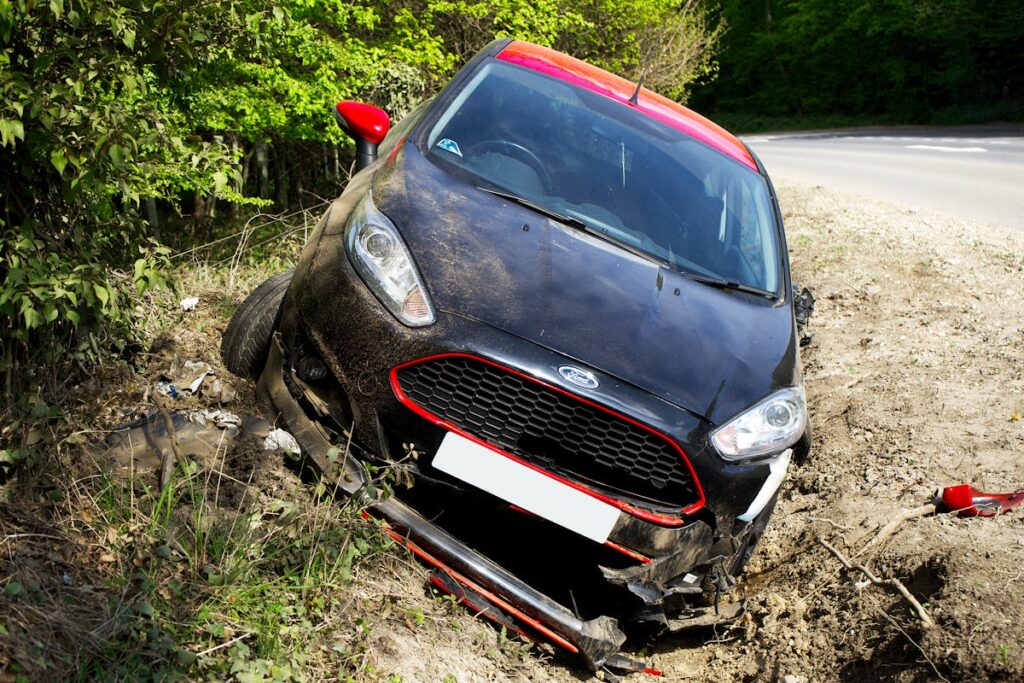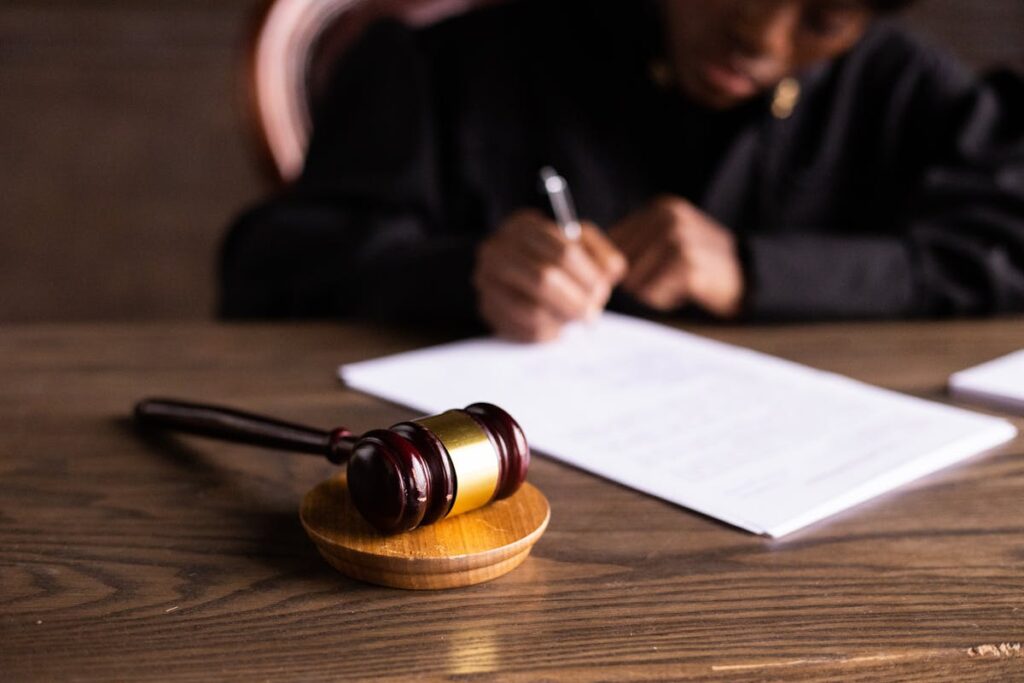Documenting evidence at an accident scene requires a methodical approach to guarantee the integrity of information collected. Initially, assess the safety of the area to prevent further harm. Systematically capture photographs from various angles and document all details with precision. Engage with witnesses to gather reliable statements and contact information. Note environmental conditions and preserve any physical evidence. Each step is essential for constructing a thorough record, pivotal for potential legal processes. What follows is a deeper exploration into these elements.
Assess the Safety of the Scene
Before documenting evidence at an accident scene, it is essential to assess the safety of the environment to guarantee the well-being of all individuals involved, including bystanders and responders. A thorough scene assessment involves a systematic safety evaluation of potential hazards such as fire, chemical spills, or unstable structures. Identifying these elements promptly can prevent further harm and secure a controlled environment for evidence documentation. Evaluators must observe traffic conditions, weather influences, and the presence of hazardous materials. Utilizing personal protective equipment (PPE) during this process is vital to safeguard against injuries. Additionally, keeping a safe distance from the incident site until it is deemed secure allows for meticulous documentation without risking personal safety. Efficient scene assessment guarantees a safe foundation for subsequent procedural actions.
Contact Emergency Services
Upon ensuring the scene is safe, the next critical step involves contacting emergency services without delay. This process requires dialing the local emergency number and communicating precise details of the incident, including the location, nature of the accident, and any visible injuries. Accurate information is essential to facilitate an appropriate and timely response from first responders, ensuring that the necessary medical or law enforcement assistance is dispatched efficiently.
Dial Emergency Number Immediately
Initiate the process of contacting emergency services immediately by dialing the local emergency number, which is fundamental for ensuring prompt medical attention and law enforcement response at an accident scene. Quick action facilitates an immediate response, essential in minimizing injury severity and safeguarding all involved parties. The individual should be aware of the appropriate emergency contacts in their region, typically 911 in the United States, to expedite assistance efficiently. Preparedness in such situations can greatly affect the outcome. While communication devices vary, ensuring their functionality is part of an effective emergency strategy. Relaying the location without delay is critical. Implementing this step swiftly can create a coordinated effort between medical teams and police, thereby establishing control and maintaining safety at the incident site.
Provide Accurate Incident Details
Providing accurate incident details to emergency services is essential for guaranteeing an effective response and appropriate resource allocation. When contacting emergency services, precise information forms the foundation of the incident report, influencing the speed and adequacy of the response. Specificity is vital; details such as the location, time, nature of the accident, and number of individuals involved should be communicated clearly. This accuracy aids in dispatching the appropriate medical, fire, or police units equipped for the scenario. Furthermore, detail accuracy minimizes response time, reducing potential harm or escalation. Including witness statements or observable conditions, such as weather or road conditions, further enriches the incident report. Ultimately, meticulous detail accuracy guarantees that emergency services are ideally prepared to manage the situation.
Gather Initial Information
In the process of gathering initial information at an accident scene, it is vital to systematically capture witness statements to provide an unbiased account of the events. Recording vehicle details, such as license plate numbers, make, and model, is essential for identification and any subsequent investigation. Additionally, noting environmental conditions, including weather and lighting, offers context that may influence the interpretation of the incident.
Capture Witness Statements
Capturing witness statements at an accident scene is a critical step in gathering initial information. This process involves systematically approaching individuals who observed the incident and recording their accounts meticulously. Evaluating witness credibility is fundamental; factors such as the witness’s location during the event and their ability to perceive accurately should be examined. To guarantee statement consistency, it is crucial to ask each witness the same set of structured questions, allowing for comparative analysis. Discrepancies in accounts should be noted, as they may affect the reliability of the information. Detailed documentation includes the time and location of the interview, the witness’s personal details, and a verbatim record of their statement. This thorough approach aids in constructing an accurate narrative of the accident.
Record Vehicle Details
To accurately document an accident scene, recording vehicle details is essential for gathering initial information. This process begins with the meticulous recording of the vehicle’s license plate number, ensuring that no characters are missed or misrecorded. Observers should then conduct a detailed examination of the vehicle to note damage. This includes documenting dents, scratches, broken lights, or any other visible impairments. Photographic evidence should accompany written notes to provide a visual reference. It is vital to distinguish between pre-existing and collision-specific damage, which can affect liability assessments. Additionally, noting the make, model, and color of the vehicles involved contributes to an all-encompassing documentation process. This systematic approach provides a robust foundation for subsequent analysis and investigation.
Note Environmental Conditions
When documenting an accident scene, it is imperative to systematically note environmental conditions to gather thorough initial information. Observers should meticulously assess the road surface, identifying whether it is dry, wet, icy, or uneven, as these conditions can considerably impact vehicle control and accident dynamics. Additionally, special attention should be paid to visibility factors. This encompasses the presence of fog, rain, snow, or any obstructions like overgrown vegetation or parked vehicles that may impair drivers’ sightlines. Documenting the time of day is also essential, as varying light levels—from bright sunlight to dusk or nighttime—can affect visibility. Collecting this data provides a detailed understanding of external influences on the incident, forming a critical component in reconstructing the sequence of events.

Photograph the Scene Thoroughly
Although it may seem straightforward, photographing an accident scene requires methodical attention to detail to guarantee thorough documentation. The task involves capturing a detailed set of images from various scene angles to provide an accurate representation of the event. A meticulously prepared photo checklist can ascertain no vital aspect is overlooked. This checklist should include wide-angle shots for context, medium-range photos for specifics, and close-ups for finer details. Capturing different angles helps document the spatial relationships and impact points, essential for later analysis. An effective photographic record will encompass all damaged vehicles, road conditions, traffic signals, and any other relevant elements. Confirming adequate lighting and clarity in each photograph is vital to maintain the integrity and usability of the visual evidence.
Take Detailed Notes
Accurate documentation of an accident scene extends beyond photographs; it necessitates the compilation of thorough notes to capture details that images alone cannot convey. Employing effective note taking techniques is essential for assembling organized documentation. Key aspects include recording date, time, and location with precision. Descriptions of weather conditions, road surface, and lighting provide context to the scene. Observations should encapsulate the positions of vehicles, skid marks, and debris distribution, offering a detailed understanding of dynamics involved. Specific details about vehicle damage, license plates, and identifying features should be diligently noted. Additionally, capturing sensory inputs such as smells or sounds adds depth. Consistency in structure and legibility enhances the utility of notes, ensuring they serve as reliable references for future analysis.
Identify and Speak With Witnesses
In the aftermath of an accident, the process of identifying and speaking with witnesses is essential for corroborating the documented evidence. It involves a systematic approach to guarantee the accuracy and reliability of witness statements. First, individuals present at the scene should be observed and approached systematically to assess their capacity to contribute meaningful information. Evaluating witness reliability begins by considering their vantage point during the incident and any potential biases. Engaging with witnesses involves asking direct, open-ended questions to elicit thorough narratives without leading or influencing their accounts. Analyzing these responses helps determine consistency and relevance to the incident details. Witness statements serve as a critical component in constructing an objective, thorough understanding of the accident circumstances.
Collect Contact Information
To guarantee thorough documentation of an accident scene, collecting contact information from all witnesses is paramount. This critical step involves systematically recording names, phone numbers, and addresses of individuals who observed the incident. The process to collect witness information is essential, as it allows for subsequent follow-ups and corroboration of facts. Concurrently, parties directly involved in the accident must exchange insurance details, including policy numbers and provider contact information. This assures that all relevant stakeholders can efficiently address claims and liabilities. A systematic approach, preferably utilizing digital tools or pre-prepared forms, can enhance accuracy and efficiency. Properly organizing this data creates a robust foundation for potential legal proceedings, assuring that all necessary parties remain accessible for future inquiries or testimonies.
Document Weather and Road Conditions
How might environmental factors contribute to an accident’s occurrence? Weather impact plays a significant role in road safety, influencing vehicle handling and driver visibility. Adverse conditions such as rain, snow, or fog can reduce tire traction and increase stopping distances, making it critical to document weather factors at an accident scene. Recording precise weather conditions, including temperature, precipitation, and visibility, provides context for understanding the incident’s dynamics.
Road conditions are equally critical to document. Details such as road surface type, presence of debris or potholes, and any existing skid marks must be noted. These elements can affect vehicle stability and maneuverability. Accurate documentation of both weather and road conditions aids in reconstructing the event and evaluating liability, offering insights into potential preventative measures.
Preserve Any Physical Evidence
Preserving physical evidence at an accident scene is vital for accurate analysis and legal evaluation. The integrity of evidence directly influences the outcome of investigations and liability assessments. Preservation techniques involve securing the scene to prevent contamination or tampering. Physical evidence includes debris, vehicle positioning, skid marks, and personal belongings. Each element provides important insights into accident dynamics and causation factors. Evidence importance cannot be understated, as it forms the basis for reconstructing events and validating witness accounts. Utilizing marked boundaries and documenting evidence locations with precise measurements guarantees reliability. Implementing photographic and video records further enhances the evidence catalog. Timely collection and storage under controlled conditions are essential to maintaining evidentiary value, making sure it withstands scrutiny during legal proceedings.
Frequently Asked Questions
How Do You Handle Hostile Witnesses at an Accident Scene?
When addressing hostile witnesses, employing calming techniques is essential. Employing hostile witness strategies involves maintaining composure, actively listening, and using non-confrontational language. This approach facilitates cooperation and aids in gathering accurate, unbiased information from reluctant individuals.
What Should You Do if Your Phone Battery Dies During Documentation?
When a phone battery dies, one should employ phone backup methods or battery alternatives. Technical strategies include carrying a portable charger, using power banks, or switching to secondary devices to guarantee continuous documentation without data loss.
Are There Specific Apps for Documenting Accident Scenes Effectively?
Accident documentation apps and digital evidence tools are increasingly tailored for effective scene recording. These applications offer features like photo capture, voice memos, and GPS tagging, ensuring thorough and organized data collection, even when traditional methods falter.
How Long Should You Keep the Documented Evidence After an Accident?
The duration for evidence retention in accident documentation depends on legal requirements and insurance policies. Generally, it’s advisable to keep records for several years to guarantee compliance and facilitate potential claims or legal proceedings.
What Legal Considerations Should Be Taken When Documenting Evidence?
When documenting evidence, one must consider legal rights and liability issues, ensuring compliance with privacy laws and accurate representation. This includes obtaining consent when necessary and maintaining documentation integrity to avoid legal disputes and potential liability claims.

